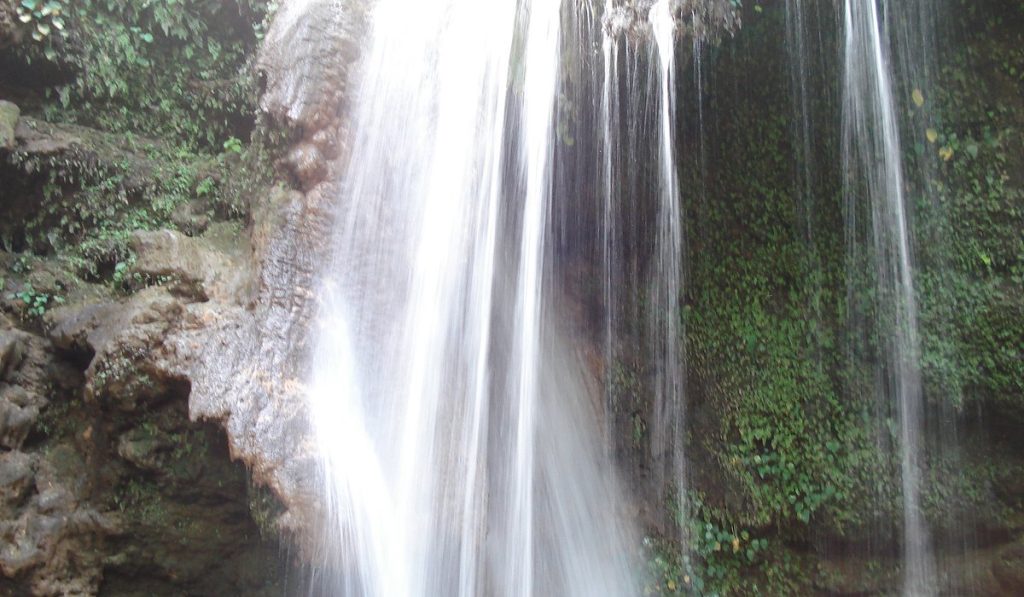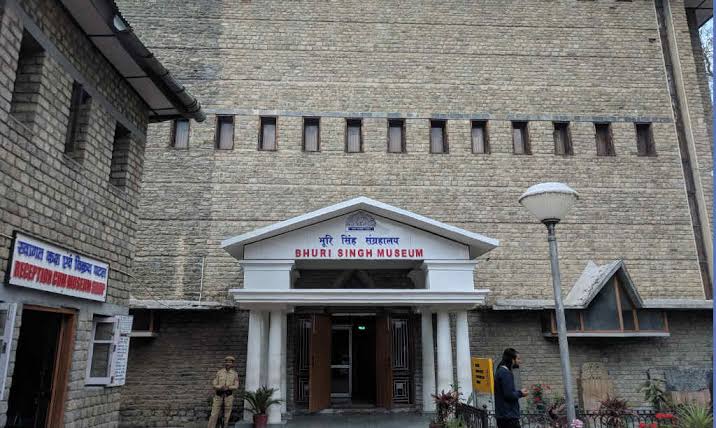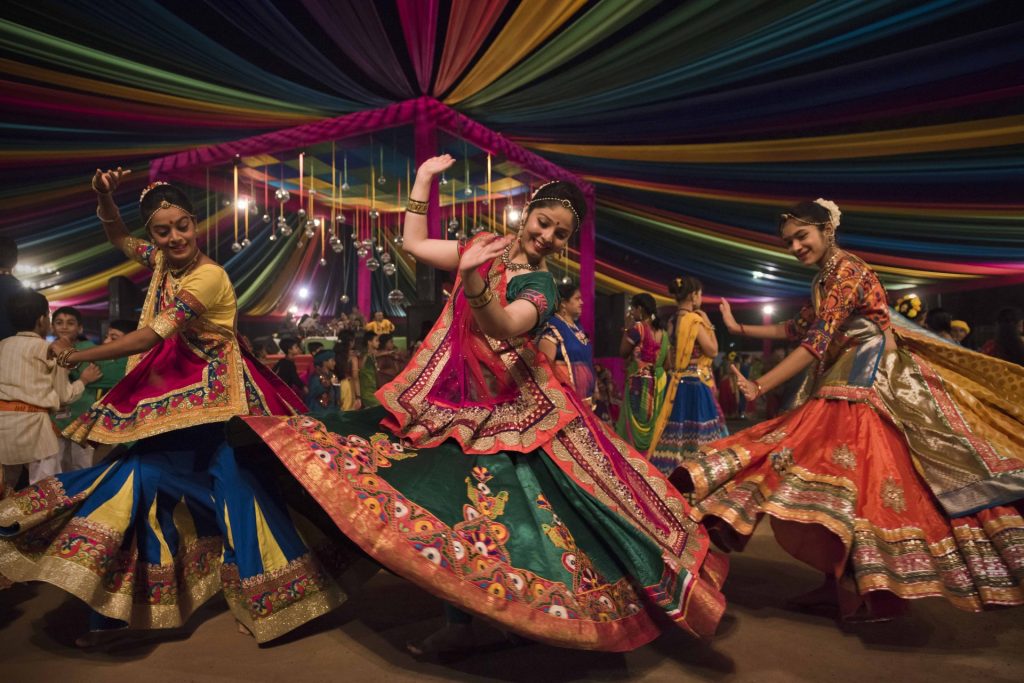Nestled in the picturesque town of Chamba, the Bhuri Singh Museum is a treasure trove of history and culture. Established in 1908, this museum offers a fascinating glimpse into the rich heritage of the region.
The Bhuri Singh Museum houses an impressive collection of artifacts, manuscripts, and paintings. Named after Raja Bhuri Singh, the museum showcases the diverse cultural tapestry of Chamba. Visitors can explore ancient coins, royal portraits, and exquisite miniature paintings. Each exhibit tells a unique story, reflecting the artistic and historical significance of the area.
The museum serves as a window into the past, preserving the legacy of Chamba for future generations. Whether you’re a history enthusiast or a curious traveler, the Bhuri Singh Museum promises an enriching experience.
Introduction To Bhuri Singh Museum
Have you ever wondered about the rich cultural tapestry of Himachal Pradesh? Nestled in the picturesque town of Chamba, the Bhuri Singh Museum is a treasure trove of artifacts that narrate the vibrant history and heritage of the region. This museum invites you to step back in time and explore the fascinating chronicles of Chamba’s past.
Historical Background
The Bhuri Singh Museum was established in 1908, a period when preserving history was a burgeoning concept. It was named after Raja Bhuri Singh, the ruler of Chamba, who was instrumental in its creation. This museum was born from his deep appreciation for the arts and culture of Chamba. Imagine walking through the halls that have stood for over a century, each exhibit echoing stories of a bygone era.
What makes this museum particularly captivating is its collection of inscriptions on copper plates and historical documents. These artifacts are not just pieces of metal and paper; they are windows into the administrative and cultural practices of ancient Chamba. You can almost feel the pulse of history as you gaze upon these relics.
Museum’s Namesake
Raja Bhuri Singh, the museum’s namesake, was a visionary leader. His reign from 1904 to 1919 marked a significant era in Chamba’s history. He was not only a ruler but also a patron of the arts. His contributions helped preserve and promote the region’s cultural heritage, leading to the establishment of this museum.
Imagine the dedication required to curate a collection that spans centuries. Raja Bhuri Singh’s efforts have ensured that future generations, including you, can experience the rich history of Chamba firsthand. His legacy continues to inspire visitors and historians alike, making the Bhuri Singh Museum a cornerstone of cultural preservation.
As you explore the museum, you might find yourself pondering: What stories lie behind each artifact? How did Raja Bhuri Singh’s vision shape the cultural landscape of Chamba? This sense of curiosity and wonder is exactly what makes the Bhuri Singh Museum an unmissable destination.
Next time you find yourself in Chamba, make sure to visit the Bhuri Singh Museum. Let the artifacts speak to you and immerse yourself in the rich heritage of Himachal Pradesh.

Credit: www.bhurisinghmuseumchamba.in
Architectural Marvel
The Bhuri Singh Museum in Chamba stands as an architectural marvel. It offers a glimpse into the rich history and culture of the region. The building itself is a testament to the artistry and craftsmanship of the past. Visitors are often captivated by its unique design and intricate details. Let’s explore what makes this museum an architectural gem.
Design Features
The museum’s design is a blend of traditional and colonial styles. The façade features intricate carvings and beautiful arches. The use of red bricks adds a distinct charm. The large windows allow natural light to flood the interiors. High ceilings give the space an airy feel.
Each room houses different exhibits and is thoughtfully designed. The layout is easy to navigate. The central courtyard is a standout feature. It serves as a peaceful spot for visitors to rest and reflect. The combination of open and enclosed spaces creates a harmonious flow.
Unique Elements
The museum boasts several unique architectural elements. One of the highlights is the ornate woodwork. Skilled artisans crafted the doors and windows with intricate designs. These details reflect the local craftsmanship and add to the building’s beauty.
The museum also features traditional Himachali architecture. The sloping roofs are designed to withstand heavy snowfall. The walls are thick and provide insulation. These elements make the building both functional and beautiful.
Another unique feature is the use of local materials. The red bricks and wood are sourced from the region. This not only supports local artisans but also ensures the building blends with its surroundings.
Visitors are often amazed by the attention to detail. From the carved pillars to the decorative cornices, every element tells a story. The Bhuri Singh Museum is not just a place to view artifacts. It is an experience that transports you to a bygone era.
Art And Artifacts
When you step into the Bhuri Singh Museum in Chamba, you’re immediately greeted by the rich heritage of Himachal Pradesh. The museum’s collection of art and artifacts is truly remarkable. It offers a fascinating glimpse into the past, showcasing everything from ancient sculptures to intricate miniature paintings. Whether you’re an art enthusiast or simply curious about history, the museum has something to captivate your interest.
Ancient Sculptures
The ancient sculptures at Bhuri Singh Museum are a testament to the artistic prowess of bygone eras. As you walk through the gallery, you can almost feel the stories each sculpture tells. One of the most captivating pieces is the statue of Lakshmi Narayan. It’s a stunning example of the craftsmanship of the 10th century.
Have you ever wondered how ancient artists managed to create such detailed works without modern tools? It’s mind-blowing to see the precision and dedication in each chiseled feature. The sculptures range from deities to everyday people, offering a diverse glimpse into the past. They make you appreciate the rich cultural tapestry that has shaped the region.
Miniature Paintings
Moving on to the miniature paintings, you’ll find yourself mesmerized by the delicate brushwork and vibrant colors. These paintings are small in size but grand in detail. They often depict scenes from epics like the Ramayana and Mahabharata, as well as local folklore.
One painting that particularly stands out is the depiction of Radha and Krishna. The emotions captured in their expressions are so vivid, it almost feels like they might step out of the frame. Miniature paintings require immense patience and a steady hand. You can spend hours examining the intricate patterns and still find new details to marvel at.
As you explore these artworks, you might start to wonder about the lives of the artists. What inspired them? How did they refine their skills? Asking these questions can make your visit even more engaging and thought-provoking.
So, next time you find yourself in Chamba, make sure to set aside some time for the Bhuri Singh Museum. It’s more than just a collection of art and artifacts; it’s a journey through history, culture, and human creativity.
Cultural Significance
The Bhuri Singh Museum in Chamba stands as a testament to the region’s rich cultural tapestry. It houses artifacts that tell the story of Chamba’s royal lineage, folk traditions, and artistic endeavors. This museum is not just a collection of objects; it is a bridge connecting the past with the present.
Local Heritage
The museum showcases Chamba’s unique local heritage. Traditional costumes, ancient manuscripts, and miniature paintings illustrate the region’s vibrant history. Each exhibit reflects the everyday lives of Chamba’s people. From festivals to rituals, the displays offer a window into Chamba’s cultural identity.
Moreover, the museum preserves precious relics from local temples. These religious artifacts hold deep spiritual significance. They highlight the region’s devotion and artistic creativity. The intricate carvings and sculptures are a visual delight.
Regional Influence
The Bhuri Singh Museum also emphasizes Chamba’s influence on the broader region. The exhibits display how Chamba’s art and culture have inspired neighboring areas. The museum’s collection includes items from Himachal Pradesh and beyond. This shows cultural exchange and shared traditions.
Furthermore, Chamba’s unique Pahari paintings are a highlight. These artworks have influenced many regional art forms. The museum provides context and history for these beautiful pieces. Visitors can see the evolution of styles and techniques. The regional impact of Chamba’s culture is undeniable.
Exhibitions And Collections
Bhuri Singh Museum Chamba showcases rich cultural heritage through its fascinating exhibitions and collections. Discover ancient manuscripts, sculptures, and miniature paintings that tell the region’s history.
Exploring the Bhuri Singh Museum in Chamba is like embarking on a journey through time. The museum’s exhibitions and collections offer a fascinating glimpse into the region’s rich history and culture. Each exhibit tells a unique story, allowing you to connect with the past in a meaningful way.Permanent Displays
The Bhuri Singh Museum boasts an impressive range of permanent displays. These exhibits are a treasure trove of historical artifacts and local art. You’ll find everything from ancient coins and weapons to beautiful miniature paintings that are unique to the Pahari style. One particularly captivating display is the collection of Chamba Rumal—an intricate and colorful embroidery that speaks volumes about the region’s artistic heritage. These pieces are not just visually stunning but also provide a deep insight into the traditional craftsmanship that has been passed down through generations. Imagine standing in front of a centuries-old manuscript. You can almost feel the weight of history and the craftsmanship that went into creating it. Each item in the permanent collection has been carefully preserved to give you a genuine sense of Chamba’s rich cultural tapestry.Rotating Exhibits
The museum also features rotating exhibits, ensuring that there is always something new to discover. These temporary displays often focus on specific themes or periods, providing a fresh perspective on Chamba’s history and art. For example, a recent exhibit highlighted the evolution of traditional Pahari music. It featured ancient instruments, rare recordings, and even interactive stations where you could listen to traditional melodies. This exhibit not only showcased the instruments but also narrated the story of how music has been an integral part of Chamba’s cultural identity. These rotating exhibits are an excellent reason to visit the museum multiple times. Each visit offers a chance to uncover different aspects of Chamba’s history and culture that you might have missed before. Have you ever wondered how the past influences the present? The rotating exhibits at the Bhuri Singh Museum offer an engaging way to explore this connection. They invite you to look deeper and appreciate the complexities and nuances of a heritage that continues to shape the region today. In summary, the Bhuri Singh Museum’s exhibitions and collections provide a captivating look into the historical and cultural richness of Chamba. Whether it’s the timeless beauty of the permanent displays or the fresh insights from rotating exhibits, there’s always something to inspire and educate. So, why not plan your visit and experience it all for yourself?Visitor Experience
Visiting the Bhuri Singh Museum in Chamba is a memorable experience. The museum offers a deep dive into the rich culture and history of Chamba. Visitors can explore a variety of exhibits, showcasing artifacts, paintings, and manuscripts. The serene environment enhances the overall visit, making it a perfect place for history enthusiasts and curious minds alike.
Interactive Tours
The museum features interactive tours to engage visitors. Guides offer detailed information about each exhibit. These tours make the experience more enriching. They help visitors understand the significance of the artifacts. Interactive displays allow hands-on learning. This approach keeps everyone, especially children, interested. The tours are designed to be informative and entertaining.
Educational Programs
The Bhuri Singh Museum also offers educational programs. These programs cater to different age groups. Workshops and activities are planned regularly. They aim to educate participants about the local history. Schools often organize trips to the museum. Students get to learn in a fun and interactive way. The programs are a great way to instill a love for history and culture.
Preservation Efforts
Preservation efforts at Bhuri Singh Museum Chamba focus on protecting ancient artifacts. These efforts ensure the museum’s rich heritage remains intact for future generations.
The Bhuri Singh Museum in Chamba is a treasure trove of art and culture, showcasing the rich heritage of Himachal Pradesh. However, maintaining such a collection requires diligent efforts to preserve these precious artifacts. The museum has implemented several preservation strategies to ensure its collection remains intact for future generations. Here’s a look at their preservation efforts under the subheadings: Conservation Techniques and Future Plans.Conservation Techniques
The Bhuri Singh Museum employs a range of conservation techniques to maintain the integrity of its artifacts. One of the primary methods is climate control. Artifacts, especially ancient manuscripts and paintings, are highly sensitive to temperature and humidity. The museum uses advanced climate control systems to keep these factors at optimal levels. Another crucial technique is regular maintenance and cleaning. The museum staff follows a meticulous schedule to clean and inspect the artifacts. This involves using soft brushes and specialized cleaning agents that do not harm the materials. For instance, the Pahari miniature paintings are cleaned with micro-fiber cloths to avoid any damage to the delicate surfaces. Moreover, the museum has implemented preventive conservation methods. This includes the use of protective coverings and glass casings for fragile items. These measures help in preventing dust accumulation and physical damage. Additionally, the museum uses pest control strategies to protect organic materials like wood and textiles from insects.Future Plans
Looking ahead, the Bhuri Singh Museum has ambitious plans to further enhance its preservation efforts. One significant initiative is the digital archiving project. By digitizing the collection, the museum aims to create a comprehensive digital database. This will not only preserve the artifacts in digital form but also make them accessible to a global audience. The museum is also planning to upgrade its storage facilities. The new storage areas will be equipped with state-of-the-art technology to monitor and control environmental conditions more effectively. This upgrade will ensure that the artifacts are preserved in the best possible conditions. Another exciting plan is to collaborate with international conservation experts. These collaborations will bring in new techniques and technologies that can enhance the existing preservation methods. By learning from global best practices, the museum aims to set new standards in artifact preservation. Additionally, the museum is working on educational programs to raise awareness about the importance of preservation. These programs will involve workshops and seminars for students and the local community. By engaging with the public, the museum hopes to foster a sense of collective responsibility towards heritage conservation. In essence, the preservation efforts at Bhuri Singh Museum are both robust and forward-thinking. They not only focus on current needs but also on future sustainability. How do you think these efforts impact our understanding and appreciation of cultural heritage? Your thoughts can help shape the dialogue on heritage preservation.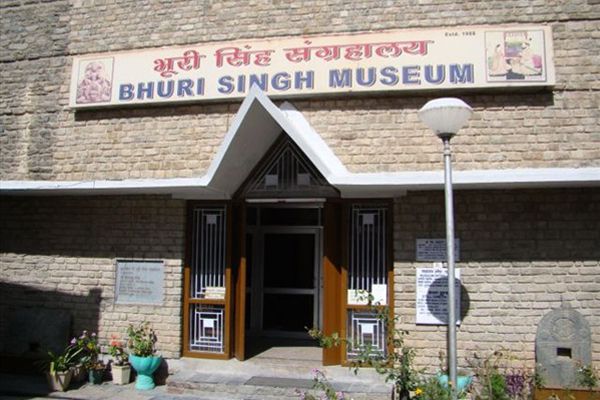
Credit: www.globalinch.org
Plan Your Visit
Planning a visit to the Bhuri Singh Museum in Chamba? This guide will help you make the most of your trip. From opening hours to handy visitor tips, we’ve got you covered.
Opening Hours
The Bhuri Singh Museum welcomes visitors daily. The museum opens at 10:00 AM and closes at 5:00 PM. It remains closed on Mondays and public holidays. Plan your visit accordingly to avoid any disappointment.
Visitor Tips
Here are some tips to enhance your visit:
- Arrive early to enjoy a quieter experience.
- Wear comfortable shoes for walking around.
- Bring a water bottle to stay hydrated.
- Respect the artifacts and do not touch them.
- Photography is allowed, but without a flash.
Following these tips will ensure a smooth and enjoyable visit to the Bhuri Singh Museum.
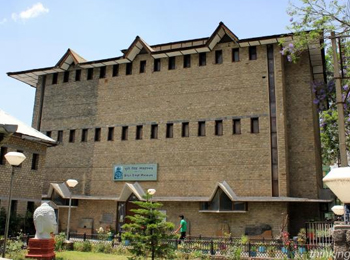
Credit: www.tourmyindia.com
Frequently Asked Questions
What Is Bhuri Singh Museum?
Bhuri Singh Museum is a historical museum located in Chamba, Himachal Pradesh. It was established in 1908 and showcases Chamba’s rich cultural heritage.
Where Is Bhuri Singh Museum Located?
Bhuri Singh Museum is located in Chamba town, Himachal Pradesh, India. The museum is easily accessible and near the main market.
What Can You See In Bhuri Singh Museum?
The museum houses artifacts, paintings, coins, and manuscripts. It offers a glimpse into Chamba’s history and rich cultural traditions.
Why Visit Bhuri Singh Museum?
Visiting Bhuri Singh Museum provides an educational experience. It helps visitors understand Chamba’s historical significance and cultural evolution.
Conclusion
Bhuri Singh Museum in Chamba offers a deep dive into history. Visitors can explore rare artifacts, paintings, and scriptures. Each piece tells a unique story of the region’s past. The museum’s collection is a treasure trove for history enthusiasts. Don’t miss out on visiting this cultural gem.
It provides a rich, educational experience for all ages. Plan your visit and step back in time. Enjoy the fascinating journey through Chamba’s heritage.
{ “@context”: “https://schema.org”, “@type”: “FAQPage”, “mainEntity”: [ { “@type”: “Question”, “name”: “What is Bhuri Singh Museum?”, “acceptedAnswer”: { “@type”: “Answer”, “text”: “Bhuri Singh Museum is a historical museum located in Chamba, Himachal Pradesh. It was established in 1908 and showcases Chamba’s rich cultural heritage.” } } , { “@type”: “Question”, “name”: “Where is Bhuri Singh Museum located?”, “acceptedAnswer”: { “@type”: “Answer”, “text”: “Bhuri Singh Museum is located in Chamba town, Himachal Pradesh, India. The museum is easily accessible and near the main market.” } } , { “@type”: “Question”, “name”: “What can you see in Bhuri Singh Museum?”, “acceptedAnswer”: { “@type”: “Answer”, “text”: “The museum houses artifacts, paintings, coins, and manuscripts. It offers a glimpse into Chamba’s history and rich cultural traditions.” } } , { “@type”: “Question”, “name”: “Why visit Bhuri Singh Museum?”, “acceptedAnswer”: { “@type”: “Answer”, “text”: “Visiting Bhuri Singh Museum provides an educational experience. It helps visitors understand Chamba’s historical significance and cultural evolution.” } } ] }
